 |
Tiffany Bradshaw
Award: TSANZSRS ASM 2023 Travel Grant
Presentation: Intra-breath oscillometry in the assessment of those born very preterm
|
|
About the research: Many individuals born very preterm have low lung function and some breathe better after using bronchodilators, such as a Ventolin puffer. Oscillometry is a test that assesses lung function and is highly feasible in young children. Intra-breath oscillometry is a novel oscillometry measurement that has been successfully used to detect wheeze in children. We wanted to see if this novel test could detect differences in lung function and bronchodilator responsiveness (a change in lung function after a Ventolin puffer) in those born very preterm. Our group performed intra-breath oscillometry before and after Ventolin, on 301 very-preterm children and young adults (aged 6-23 years), as well as 79 term-born controls. We found that intra-breath oscillometry detected differences in lung function between the preterm and term-born groups. However as this is a novel test, more data is needed to help with understanding the results. Because of this, intra-breath oscillometry is a difficult tool to use to determine if bronchodilators improve breathing in people born preterm. Further studies are needed to enable this test to be used in everyday clinical practice.
|
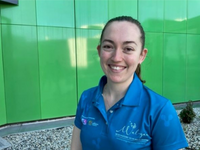 |
Denby Evans
Award Finalist: Ann Woolcock New Investigator Award
Presentation: The airway epithelial barrier is compromised in survivors of very preterm birth
|
|
About the research: We know that many people who survive being born early continue to have lung problems throughout their life. However, we don’t know what causes these ongoing problems and that means we also don’t know what treatments would work best. Sometimes, breathing problems can be caused by changes in the cells that line the airways, called the airway epithelium. In this study, we collected airway cell samples from inside the nose of babies, children and young adults born preterm. The cells were then studied in the laboratory to see if preterm birth changes the way the cells look and behave. We found that the cells from people born preterm were leakier and healed more slowly after injury than the cells collected from people born at term. This information helps us to understand how airway cells contribute to lung disease after preterm birth and gives us new avenues to explore for designing targeted treatment options. Ultimately, this research helps bring us one step closer to improving lung health in those born preterm.
|
 |
Dr James Gibbons
Presentation : Increasing airway obstruction in bronchopulmonary dysplasia: a meta-analysis
|
|
About the research: Results will be presented from a recent systematic review showing that survivors of preterm birth have increased small airway obstruction later in life compared to people born at term, with more significant obstruction seen in people born preterm with a diagnosis of bronchopulmonary dysplasia (BPD). Additionally in those with BPD, small airway obstruction appeared to progressively increase with age, raising concerns that this group of individuals may be on a trajectory for early onset chronic obstructive pulmonary disease.
Symposium: Chronic lung disease after prematurity - not all outcomes are equal
About this session: This session will explore the disparities in long-term respiratory outcomes which exist in children born preterm, discussing how outcomes substantially differ in high income countries and low or middle income countries, and also looks at the at-risk subpopulations which exist within high income countries such as Australia.
|
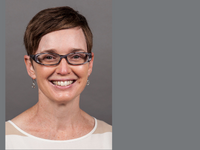 |
Naomi Hemy
Presentation: Developing a priority setting partnership for preterm lung health research
|
|
About the research: In Australia approximately 9% of babies are born prematurely, or preterm (before 37 weeks of completed pregnancy), affecting over 26,000 families nationally. Premature birth and its effect on the lungs can lead to breathing problems during childhood and into adult life. However, the longer-term lung health outcomes of prematurity are poorly understood. This presentation is about describing the process of conducting a Priority Setting Partnership (PSP) to determine what the community, including people born preterm, their families and loved ones, and the health professionals who look after preterm patients, think are the ‘top 10’ unanswered research questions, or priorities, for preterm lung health. We hope that the outcomes of the PSP will direct researchers, and the agencies that fund them, to projects that are likely to have the most impact and importance to the community.
|
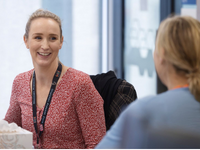 |
Alana Harper
Presentation: Anxiety and depression in adolescents with cystic fibrosis
|
|
About the research: We know that anxiety and depression in adolescents with cystic fibrosis (CF) is 2-3 times higher than those in the general community. We also know that the COVID-19 pandemic has been shown to increase levels of distress and difficulties in secondary students in Western Australia (WA). We wanted to look at the prevalence of anxiety and depression symptoms in adolescents with CF living in WA during the pandemic and look at any associations with any breathing problems. To answer this question, we followed adolescents with CF aged between 12 and 18 during a two-year period and asked them to complete questionnaires that gave us information about their anxiety and depression levels and also information about any breathing problems or symptoms they had experienced at that time. We then looked at the scores of these questionnaires and compared it to their breathing test results. We found that 39% of our participants had an elevated anxiety score and 28% had an elevated depression score. These were often related to reported breathing problems as documented from their questionnaire answers. This shows us that depression and anxiety was common in adolescents with CF in our Centre. The information collected as part of this study demonstrates the importance of depression/anxiety screening and psychological support for adolescents with CF and their families.
|
 |
Reanne Ho
Presentation: SARS-CoV-2 spike fails to induce inflammation in paediatric airway cells
|
|
About the research: It is becoming evident, with emerging variants of SARS-CoV-2, that children can also become sick with COVID-19 and with so many unknowns in the field, this leaves so much to be discovered about how we can protect our children. One way we can do that is to continue learning about the beginnings of the COVID-19 infection, which starts with the virus’ spike protein. It is a protein that is found all over the surface of the virus which is recognised by the receptors on our airway cells and plays a role in the first step of infection. This talk explains what happens when this spike protein is introduced to airway cells grown in the lab that were originally from the noses of children.
|
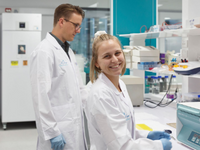 |
Samantha McLean
Presentation: Can Azithromycin improve barrier dysfunction of preterm born airway epithelial cells?
|
|
About the research: We aim to improve lung function in those who are born too early, known as preterm birth. Breathing in the early days/months is tough for the preterm baby, additionally, evidence suggests that lung function gets worse throughout childhood. This means that the damage to the lungs is ongoing and needs treatment. Azithromycin, traditionally used as an antibiotic, has shown improvements in other lung conditions such as asthma and is a possible treatment for ongoing preterm lung disease. This study aims to collect the missing laboratory evidence to help us understand if azithromycin will have beneficial effects in people born preterm. Cells that line the airways (airway epithelial cells) were used to investigate the useful effects of azithromycin. We found that azithromycin improved wound repair but did not improve the leakiness of preterm airway epithelial cells. These findings show the benefits azithromycin had on preterm airway epithelial cells and that more research into azithromycin is needed for survivors of preterm birth. Finding a treatment for preterm lung disease will help allow our smallest babies live their biggest lives.
|
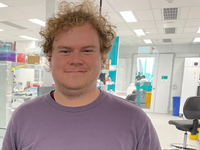 |
Dr Samuel Montgomery
Award: Janet Elder International Travel Award in the early career researcher category
Presentation: Interferon 1β-1a ring prophylaxis to reduce household transmission of SARS-CoV-2
|
|
About the research: This presentation will deliver the results of the Containing Coronavirus Disease-19 (ConCorD-19) clinical trial on behalf of the ConCorD-19 study team. This trial was conducted through 2020 and 2021 in Santiago, Chile, to assess whether treatment with interferon, an anti-viral protein, could reduce the consequences of infection with COVID-19, and assess whether it could reduce the transmission of COVID-19 within a household.
|
 |
Grace Pettigrew
Award: TSANZSRS ASM 2023 Travel Grant
Presentation: Feasibility and short-term repeatability of oscillometry in children with neuromuscular disorders
|
|
About the research: Children with neuromuscular disorders (NMD) have muscle weakness which leads to difficulty breathing. Oscillometry has been suggested to be a useful tool to monitor progression of lung disease. However, to understand the usefulness of Oscillometry, we first need to determine if short-term repeatability is similar in children with and without NMD. Twelve children with NMD and 58 healthy children from the community were recruited into the study. Oscillometry was performed by children on at least two occasions, one month apart. Testing was feasible in children as young as six years old. Oscillometry was more variable in children with NMD than in healthy children. Future directions of this research include looking at the relationship between Oscillometry results and disease progression.
|
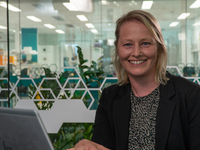 |
Associate Professor Shannon Simpson
Presentation: Inhaled corticosteroids in survivors of very preterm birth: PICSI RCT
|
|
About the research: Commencing in late 2018, the PICSI study was a randomised controlled trial that aimed to determine the effectiveness of a common asthma mediation fluticasone, or ‘Flixotide’, for treating ongoing breathing problems in preterm born children (6-12 years old) born <32 weeks gestation. After more than 3 years of seeing families, the PICSI study team recruited their final participant in February 2022. In this period, the study team saw 176 preterm children and 38 term-born age matched controls for a baseline visit consisting of lung function and the collection of biological samples, and a follow-up visit 12 weeks later to assess any changes in lung function after taking Flixotide or a placebo. This presentation will discuss the study results.
|
 |
Dr Elizabeth Smith
Presentation: Early-life risk-factors determine lung function trajectories for those born preterm
|
|
About the research: Whilst people born early are more likely to develop respiratory disease, it is difficult to predict which individuals will be most affected. We aimed to determine the different 'trajectories' or paths that lung function can take following preterm birth, and what are the risks for following the path that leads to worse adult lung function. To do this, we collected lung function data from 200 people born early (less than 32 weeks gestation) in Perth, between ages 5 and 19. We found that individuals who were admitted to hospital for a respiratory infection in childhood were four times more likely to follow the lower lung function trajectory. Those exposed to tobacco smoke at home were twice as likely to follow this poorer trajectory. Understanding these risks can help healthcare professionals provide the best information to families, and help direct research to improve outcomes for these children.
|
 |
Andrew Vaitekenas
Award Finalist: Ann Woolcock New Investigator Award
Presentation: Understanding Phage-Bacteria Dynamics to Guide Resistance Suppressing Cocktail Formulation for Antibiotic Resistant Pulmonary Infections
|
| About the research: This presentation is about Andrew’s work on bacteriophage (phage) therapy for life threatening Pseudomonas aeruginosa infections in people with cystic fibrosis (CF). Andrew will present his results that show this bacteria can develop resistance to phage treatment. Andrew has then found that by becoming resistant to phages the bacteria become more susceptible to tobramycin (a commonly used antibiotic in CF). So by combining phages with tobramycin we could potentially prevent resistance to either arising. Andrew has also done some preliminary testing of phage-tobramycin combinations and found that they can work well together at specific doses to treat the bacteria. |












